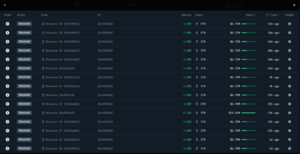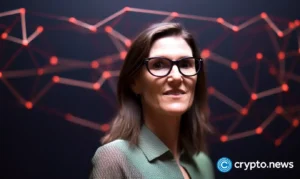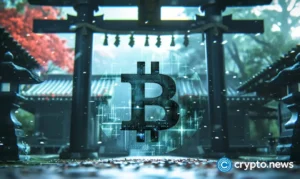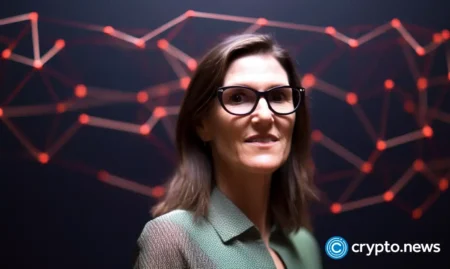During the historically significant block size debate that raged through the Bitcoin userbase from 2015 to 2017, a key area of contention surrounded the idea of how bitcoin (BTC)-denominated payments will scale to a global userbase.
While some major miners, exchanges, wallet providers, and other users wanted to see a hard fork to increase capacity for on-chain payments, the major contributors to Bitcoin Core and other users thought it would be a better idea to try to maximize use of the then-available block space limit before opting for a backwards incompatible change that could potentially split the network.
The end result of this debate was the adoption of Segregated Witness (SegWit), which paved the way for the Lightning Network to develop as a secondary payments layer for the base Bitcoin blockchain.
While there has been some adoption of this layer-two (L2) Bitcoin network in various forms, drivechain inventor and LayerTwo Labs CEO Paul Sztorc recently referred to Lightning as a “giant failure,” which sparked some debate on X.
This isn’t necessarily a new position from Sztorc, as he’s written rather extensively about Lightning’s shortcomings and attempts to blackpill Lightning enthusiasts at any opportunity.
So, is there merit to Sztorc’s claims regarding the Lightning Network? Let’s take a closer look at a recent debate Sztorc had with the Human Rights Foundation’s Alex Gladstein on What Bitcoin Did, in addition to some additional, clarifying comments Sztorc shared with Protos.
Read more: Bitcoin Lightning bug could jam and steal millions of dollars
Practice vs. theory
Much of the disagreement between Sztorc and Gladstein regarding the success or failure of Lightning Network has to do with how the BTC-denominated payments protocol works in practice today in comparison to how it theoretically may not work so well over the long term.
On the one hand, Gladstein pointed to numerous examples of how the network is providing value to users today, such as Nostr Zaps, adoption by large exchanges like Binance and Coinbase, and the upcoming integration for Square merchants.
Additionally, much of Gladstein’s work with the Human Rights Foundation occurs in areas where the lack of know your customer and anti-money laundering restrictions on Bitcoin have been a boon to adoption for those who need it most.
Additionally, Gladstein says there have been massive improvements made to the Lightning Network’s usability in the past five or six years.
“From our perspective, what you’re saying couldn’t be further from our experience,” he told Sztorc during their recent debate.
In contrast, Sztorc sees these examples of real-world use as mostly irrelevant to his underlying point of the system not being scalable or workable over the long term.
Notably, he explicitly pointed to the increased fees caused by the Ordinals Inscriptions phenomenon as an example of how the Lightning Network can start to buckle under pressure.
To Sztorc’s point, the Lightning Network does have an issue where reverting to the Bitcoin blockchain or opening a low balance self-custodial Lightning channel in the first place can become uneconomical in high-fee environments.
Sztorc prefers his own solution, known as drivechain, over the Lightning Network. A drivechain is a type of Bitcoin sidechain where the BTC is effectively controlled by the miners.
To be clear, Gladstein stated that drivechains are an interesting idea; however, he also pointed out that the fact that they are strictly theoretical at this point due to their lack of existence on Bitcoin’s mainnet.
Sztorc has published multiple Bitcoin Improvement Proposals (BIPs), notably BIP 300 and BIP 301, regarding the drivechain concept, but there hasn’t been much traction in terms of activating the necessary soft fork for the change, whether that be through Bitcoin Core or an alternative soft fork activation client.
Drivechain critics, such as Bitcoin Core contributor and OpenTimestamps founder Peter Todd, say Sztorc’s idea can negatively affect Bitcoin at the base layer, despite the intended goal of drivechain to act as a solution for secondary protocol layers.
Sztorc has published responses to common criticisms of his invention in FAQ format.
“I don’t think it’s guaranteed to work, but I do think, relative to the [interest or hype] Lightning gets, it is totally mismatched,” Sztorc said during the debate.
He also analogized drivechains to “teleporting to the finish line” of Bitcoin’s eventual scaling roadmap.
Read more: Bitcoin Lightning bug allows remote theft of bitcoin via LND nodes
Why doesn’t the Lightning Network work?
Again, to be clear, Sztorc admits that the Lightning Network can work today on a small scale. It’s over the longer term in a larger-scale scenario where he sees more serious issues.
He even explained how he was originally very interested in the Lightning Network when it was first revealed — he even built a design for SPV fraud proofs that use the Lightning Network.
However, he’s become much more disillusioned over time.
Sztorc summarized the technical issues with the Lightning Network at one point during the debate as follows:
- There aren’t enough bytes on Bitcoin’s layer one to onboard everyone
- There’s counterparty risk because Lightning channels can lock a user’s funds for two weeks or even steal funds under certain conditions
- The inbound liquidity problem is counterintuitive and creates an expensive, terrible user experience
- High on-chain fees cause issues for onboarding and Lightning’s security guarantees, as was seen when the Ordinals phenomenon caused high fees on multiple occasions
- Much of the adoption Lightning has achieved is via custodial systems, which has tricked people into thinking Lightning is better than it really is
- Adoption is still low despite the custodial Lightning shortcut
- Privacy is terrible
In another section of the debate, Sztorc also briefly touched on the reality that BTC miners are the ones who decide which valid transactions get included in blocks.
As such, they may have a bit of extra power in terms of influencing users to prefer a model where they get paid for all transactions on secondary networks, such as drivechain, over something like the Lightning Network.
“They will have the issue that either the large miners will want to vertically integrate, or they’ll have some sort of tug-of-war conflict over who can get that money, at which point a lot of the security model will go away,” Sztorc explained.
While there is plenty of work being done by researchers and developers to solve many of the issues cited by Sztorc, his ultimate critique is that the Lightning Network was sold as the be-all and end-all for all of Bitcoin’s problems.
He went as far as to compare claims that Lightning’s current technical challenges were always known and the system was never intended to be used by all end users to the mantra of “We have always been at war with Eastasia” from the novel 1984.
In line with Sztorc’s critique, a growing number of people now view the Lightning Network less as a solution for everyday end users and more as the connective infrastructure between diverse secondary layers in the Bitcoin ecosystem.
“That’s a mistake I made,” admitted Gladstein during the debate. “I thought that was the case, and then I changed my mind based on evidence.
“I think now that Lightning is going to be this central nervous system-type network that exists between what the end users use, and the on-chain [users], and businesses, and exchanges, and everything. They’re all going to speak to each other through this open monetary network that’s Lightning.”
Of course, this brings up another area of contention for Sztorc, as he doesn’t see the custodial or federated systems that are live on Bitcoin today as acceptable secondary layers that retain the fundamental properties that make BTC valuable in the first place.
And to be fair, many other Bitcoin users, who tend to view self-custody as a paramount property of the system, agree with Sztorc here.
“The federated model is just about the worst thing to happen in Bitcoin’s history, I think,” said Sztorc during the debate.
“So, it’s interesting that you’re so blasé about what it means. The federated model basically means: I’ll give you all of my coins immediately, and I have no recourse about ever getting them back.”
Sztorc pointed out that there are alternatives to the federated model that offer better economic guarantees for end users, including his drivechain concept.
Again, Gladstein is open to better models, but also seems excited about technology that takes advantage of how Bitcoin works today, such as Chaumian ecash protocols like Cashu enabling a much higher degree of user privacy.
There is a clear disagreement on this point, with Gladstein seeing the systems that are already possible as useful and underrated, while Sztorc does not see the point of spending time on such centralized options.
Without opening a technical can of worms that is out of the scope of this article, it should also be noted that miners can still technically steal user funds from a drivechain; however, Sztorc argues that economic incentives prevent them from doing so.
Of course, there’s no reason drivechain cannot be combined with the Lightning Network. In this scenario, Lightning is still used as the connective tissue between different layer-two networks, of which one or more drivechains are an option.
When asked about this point specifically by Protos, Sztorc stated, ”It is possible to use Lightning on each drivechain, and if they each support a common hash algo (ie sha256 — this is basically 100% guaranteed) then in fact they are all interoperable.
“If someone along the route has a channel on two or more networks, then they automatically bridge the gap.”
Sztorc added that he previously believed a drivechain could be useful for testing out new Bitcoin features that are relevant to the Lightning Network, such as SIGHASH_ANYPREVOUT, before they make it to Bitcoin’s mainnet, effectively offering early access to new Lightning features.
Near the end of their debate on What Bitcoin Did, Gladstein pleaded with Sztorc to be more open to working with other projects, but his conviction in drivechain clearly leads him to generally view other projects trying to solve similar issues as wastes of time.
“Why can’t we take the middle ground and just say [Lightning] is emerging, it’s not perfect by any stretch, [and] it has bugs,” said Gladstein. “But it’s getting better all the time.”
“I think we sorta did end up agreeing, at the end,” Sztorc later told Protos. “I finally wore them down! A little.”
Read the full article here










